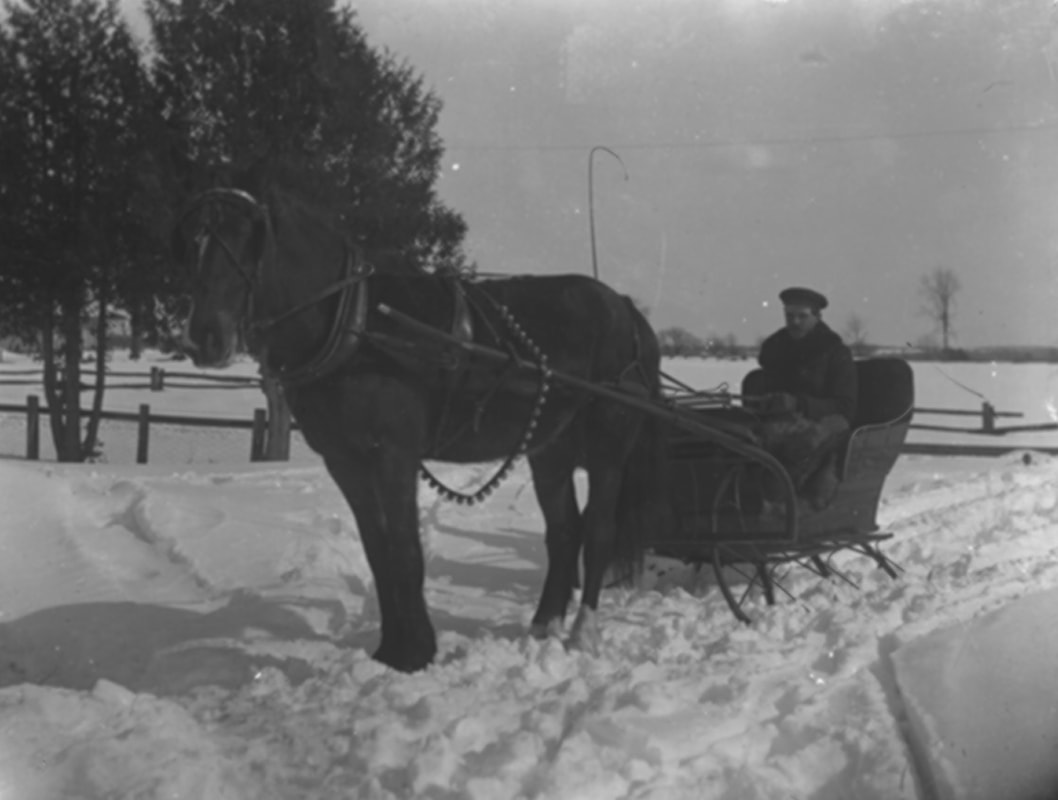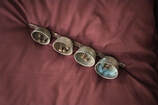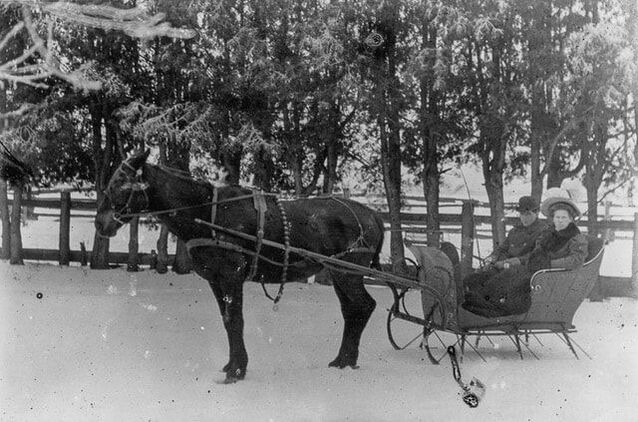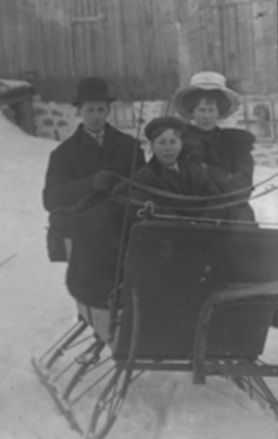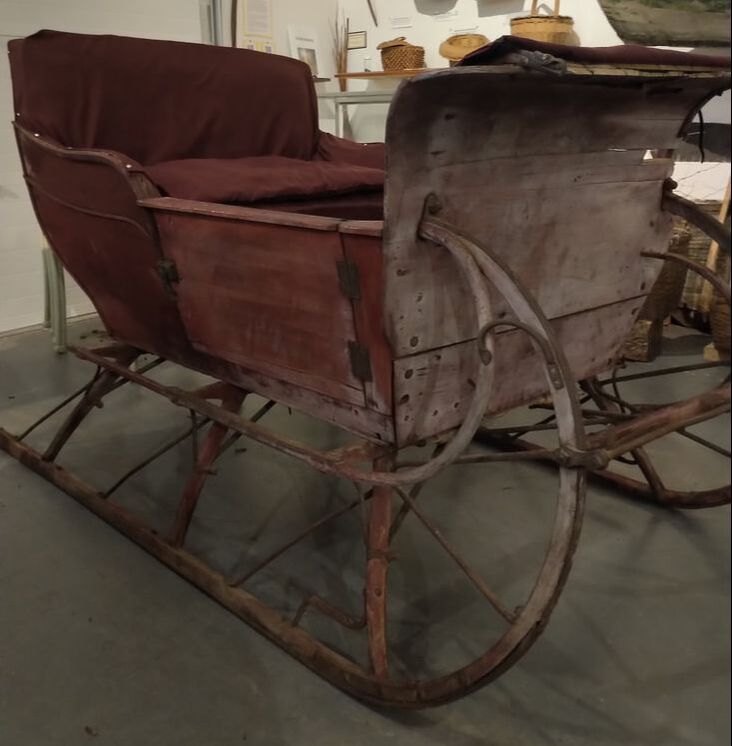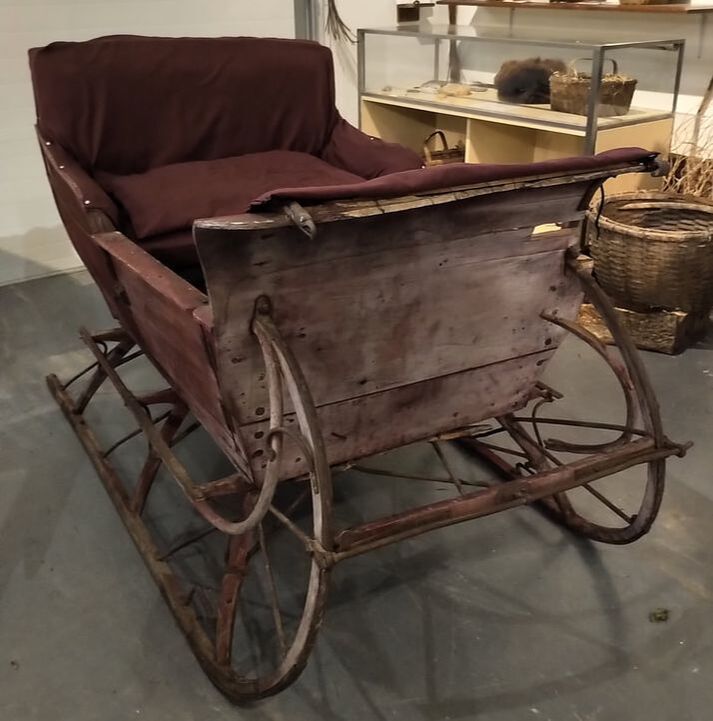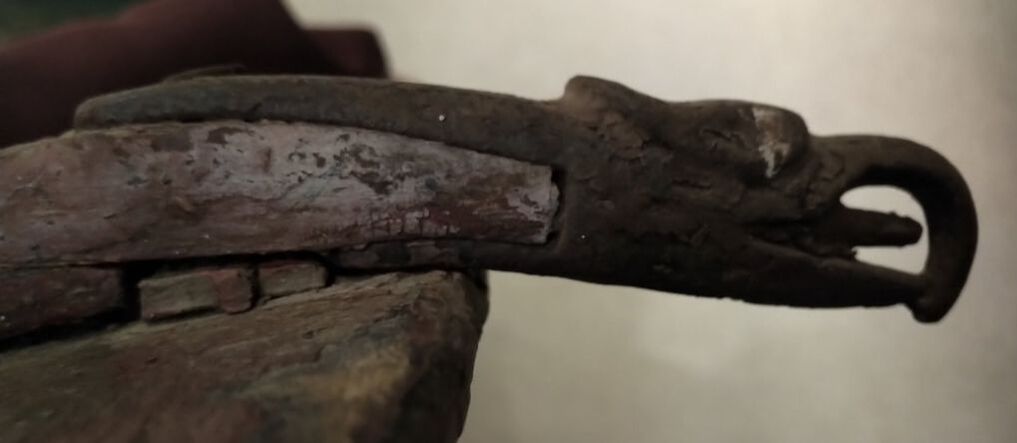|
In the early 1800’s, the term cutter was first heard describing a light sleigh designed to carry one or two people that was used to travel over top of the snowdrifts in North America. This enabled people to get around in winter where roads did not exist and were not ploughed as a regular practice at that time. Keeping roads cleared was a later service. In 1857, James Pierport published a song entitled, 'One Horse Open Sleigh' that later became know simply as 'Jingle Bells'. This song mentioned the bells on ‘Bobtail’ ringing as the cutter travelled over the snow. This was actually required as a safety measure in many communities. Families listened for the distinctive bells on the horses of their relatives as they approached for a visit or return home. There were 'belly bells' that went around the girth of the horse and were "fastened to the harness backpad". "Shaft bells or chime bells had three or more bells fastened on a flat, steal strap (attached) to the underside of each cutter shaft". (C.Smith) By the 1820’s, James Goold of Albany Coach Works began to design a more decorative cutter known as the Albany Sleigh. Before this time, sleighs were often referred to as having a piano box style. The mail coach at the Museum is a good example of this construction. It was sturdy, but much heavier and required more horse power. The lighter cutter allowed use of a single, smaller horse. The cutter was mainly used as a quick way to get from one place to another for visiting, business and general errands. They were also regularly used to attend Church and community social events. By 1818, Portland Cutters designed by Peter Kimball of Maine were made with a ‘rolled dash’ at the front. High, long single piece runners allowed it to traverse the deep snow more easily. In 1889, the body design was rounded and known as a ‘swell body’. The Portland Cutter was more affordable than the Albany Sleigh which was often made more expensive by customized orders for paint colours and the seat upholstery fabrics chosen. The Portland Cutter had a straight back design which was easier to manufacture and cheaper to produce. Sears, Roebuck Catalogue was advertising the Portland Cutter for $20.30 in 1911. The Middleville and District Museum is thrilled to have received the donation from the Moulton family of what is believed to be an early 1900's Portland Cutter. It delighted visitors during the Victorian Christmas event at the Museum in November. Research points to the Moulton Cutter being a Portland Cutter. The distinguishing features of side doors and a special iron eagle head on the right end of the front dash board support this conclusion. The side doors were a fairly unusual feature and are believed to be a nod to the rising popularity of automobiles in the 1900’s. The doors were often deemed a novelty feature, but served a practical purpose by keeping the snow out of the cutter as it blew up around the sides. The eagle head was probably a reflection of the American production company. The Moulton Cutter will be on display when the Museum reopens on Victoria Day weekend. Make a note to see this gem.
0 Comments
Leave a Reply. |
AuthorThis journal is written, researched, and maintained by the volunteers of the Middleville Museum. |
